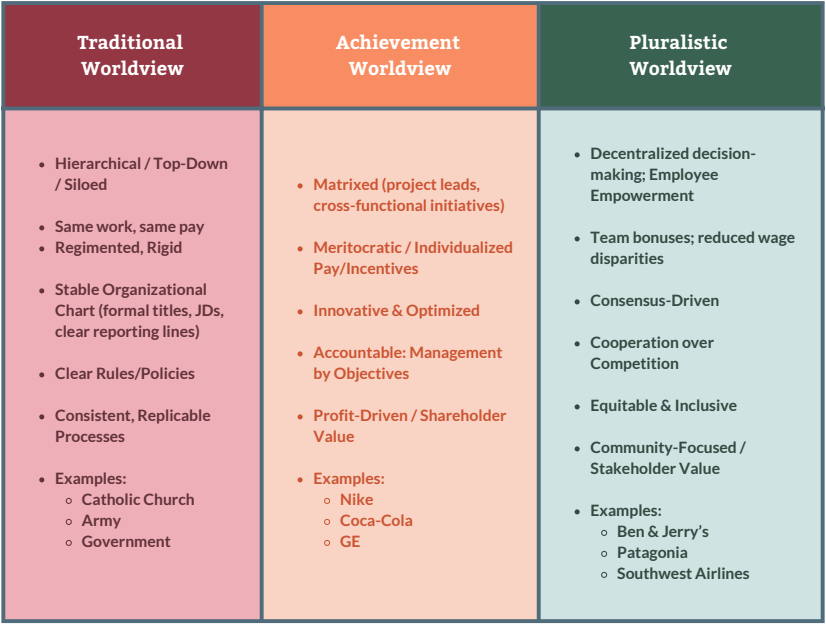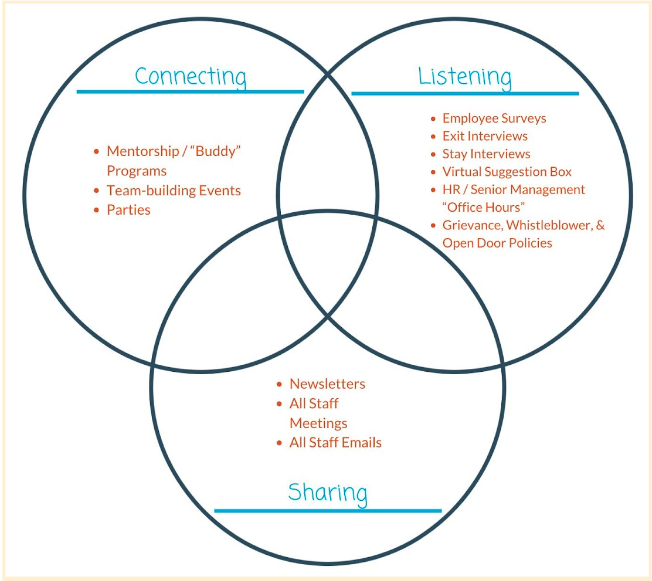Culture is coming up a lot in our work these days. As Peter Drucker once said, “Culture eats strategy for breakfast.” And it’s true; we’ve seen it. In organizations where the culture is bad or even toxic, the ability to move forward with other work is, well, nearly impossible.
But what is culture, really, and what can you do as a small nonprofit to improve it?
Organizational Culture is:
👉 A set of beliefs, values, practices, assumptions, and behavioral norms within an organization
And it includes elements such as:
👉 Organizational Structure
👉 Compensation
👉 Decision-Making
👉 Descriptors
👉 Drivers
Understanding Organizational Worldviews
But here’s the thing, despite this set of ‘things’ that make up culture, there isn’t ONE type of culture. The chart pictured here is adapted from philosopher Ken Wilber’s models, as outlined in Frederic LaLoux’s Reinventing Organizations, and shares a few of the most typical types of cultures that exist within organizations today.

Often, organizations are a hybrid of a few different types of cultures—for example, you may have a community-focused orientation but a hierarchical management structure.
Organizational Communication
Regardless of your organizational worldview, which we’d suggest you stop to consider, one of the most important aspects of culture building and management is Open Communication. THRIVE IMPACT recently partnered with HR expert Megan Thiele to train nonprofit leaders on the types of communication they utilize and identify the areas where they’d like to grow. More on this in a moment.
Why is communication important?
When communications flow freely throughout the organization, employees feel that their voice is heard and that they understand the organization’s goals (and how their work ties in).
Research shows that these factors lead to greater engagement, motivation, and retention.
The Three Levels of Communication
As Megan shared with us, there are three primary levels of communication that you can use (and scale up/down based on your budget) in support of increasing engagement.

Where do you fit, and where do you want to grow?
Using the graphic above, identify where you already have strength. Where are you doing great? Now, identify where you want to grow—most organizations do okay at sharing but do less well with listening and connecting.
Next, find 1-3 things to implement in your organization this quarter. Co-create which ones to introduce with your team, and then see what it does for your culture. Culture takes intentionality. It takes sharing, listening, and connecting.
Here’s to a better culture—whatever that looks like for you!